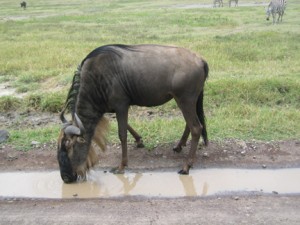 East Africa is the stage for the world’s greatest wildlife drama. The wildebeest migration is an annual journey of hundreds of thousands of animals from the Serengeti in Tanzania to the Masai Mara in Kenya.
East Africa is the stage for the world’s greatest wildlife drama. The wildebeest migration is an annual journey of hundreds of thousands of animals from the Serengeti in Tanzania to the Masai Mara in Kenya.
Between the open plains of the Serengeti and the Masai Mara, thousands of wildebeest and zebras migrate to greener pastures as the seasons change and the circle of life and death continues. Predators follow the wildebeest migration closely, waiting for an opportunity to strike weak prey as they make their way into different territories.
The precise timing of the wildebeest migration changes annually, and it is a very unpredictable and spontaneous natural event. The calving season takes place in the Serengeti between the months of January and mid-March, before the wildebeest migration begins heading towards the western Serengeti in June. The best time to see the migration is usually between June and August, when the wildebeest congregate and prepare to cross the famous Grumeti River. If you are in the Masai Mara, you can expect the wildebeest to make their arrival as early as July, but they generally arrive between August and September and remain in the Mara between October and November. Between December and January the wildebeest gradually begin their migration back towards the Serengeti.
We believe that going on safari to view and witness the wildebeest migration is one of the ultimate safari experiences that Africa has to offer. Please note this is a general description of the migration cycle. Because of the spontaneous and unpredictable timing of the migration, we cannot be held liable for any misrepresentation of the current situation in East Africa.



